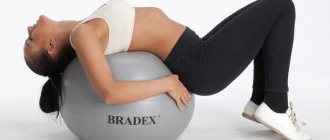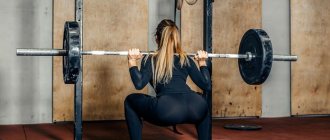Both running and jumping rope are excellent cardio options. In fact, both types of exercise involve most of the body’s muscles, develop coordination and endurance. Then what should you include in your training, and what is more effective – running or jumping rope? Let's think about this question!
The benefits of training with a jump rope
Jumping rope trains three components of your running form: endurance, strength and coordination. An important advantage of jumping rope training is that such training does not put stress on the runner’s joints, so this is an excellent way to maintain your level of fitness when running a lot is contraindicated.
If you do not plan to exclude running from your training plan, then jumping rope will additionally develop the balance, coordination and speed that any runner needs. In particular, such activities will be of interest to trail runners due to the tangible training in agility and coordination.
Jumping rope can be challenging, but the exercise is less stressful on your joints, allowing them to rest without being forced out of your cardio program. In general, cross-training also relieves you psychologically, introducing variety into the training process.
Jumping rope is also an effective exercise for increasing step frequency, or cadence, and reducing foot contact time. Running speed and running economy are derived from these two running characteristics.
Remember the main thing: improving your endurance in one sport always has an overall effect on the entire body. Therefore, jumping rope will have a positive effect on your endurance while running.
Read on the topic: How to develop and increase endurance in running
Contraindications
Despite the abundance of beneficial properties, both sports have their contraindications. In the case of running, these include:
- Chronic joint diseases.
- Diseases of the central nervous system, for example, epilepsy.
- Heart disease, such as irregular rhythm or recent heart attack.
- Respiratory diseases. People with asthma should be especially careful.
- Severe mental illness.
- Liver diseases characterized by regular severe pain.
- Exacerbation of diseases of the digestive organs.
- Osteochondrosis.
- Any disease that has not been fully cured or has progressed to an acute stage.
- Significantly overweight. The risk is associated with an excessive increase in the load on the heart.
You should avoid jumping if you have the following health problems:
- Diseases of the joints, including intervertebral ones.
- Predisposition to hypertension.
- Excess weight – 20-25 kg or more above normal.
- Heart ailments.
- Old age, especially with scoliosis and similar problems.
- Protrusions and hernias in the spine.
- Violation of the position of the joints.
- Varicose veins
- Pain in the stomach after eating.
Both workouts should not be done after a heavy meal or with severe headaches . If there is at least one of the listed contraindications, you should start exercising only after consulting a doctor.
What muscles are involved?
First of all, when jumping rope, the main “running” muscles work: the gastrocnemius, soleus, gluteal and quadriceps muscles. But, in addition to the legs, the shoulders, back, chest, abdominal muscles and triceps are involved, which means that the jump rope provides tangible general physical training.
marathon and half marathon training plans and start training today!
It is recommended for marathon and ultra runners to include similar cross-training, since their backs are subject to approximately the same load during long races.
To give your muscles a higher load, it makes sense to exercise with a weighted jump rope or leg weights.
What is a light jump rope used for?
The standard lightweight version of the jump rope is the best option for cardio training at home. It allows you to develop high intensity jumps. Its use does not require much effort to unwind, which allows you to direct all the energy into performing jumps, which allows you to gain a higher tempo. Such training makes it possible to obtain higher rates of a stable heart rate, which has a positive effect on the effectiveness of launching fat-burning mechanisms in the body. A lightweight jump rope is the best option for combating excess weight.
The Fitness Place fitness store offers a wide selection of sports equipment, accessories and exercise equipment for cardio training at home and in the open.
What is more effective: jumping rope or running?
A jump rope can be a good alternative to running if for some reason running is not possible. But if you want to achieve impressive results for an amateur, cross-training with a jump rope will strengthen and strengthen what is little used during running.
Is it stormy outside? Replace running training with jumping training. Are you bothered by a running injury and have had to give up running? Jump rope unless injury prevents you from doing so. Have you been busy all day with business, and you no longer have the strength to go for a run at such a late hour? There is nothing wrong with sometimes jumping rope instead of jogging.
Unfortunately, it will not be possible to completely replace running with a jump rope, but this only applies to those runners who want improved results. If you ran for fun or to lose weight, without planning to participate in competitions, jumping rope is a very good activity for a sedentary lifestyle.
What else can you do instead of running, we talked about in this article.
What are the benefits of running?
Running training also has many benefits:
- More efficient fat burning at an average pace. 1.5 times higher .
- Exercise has an invigorating effect , especially when running in nature.
- Calming effect on the nervous system.
- Higher load on the leg muscles.
- Enhanced development of the respiratory system . Regular exercise leads to an increase in lung capacity.
- The initial anatomical adaptation of a person to the mechanics of movements.
- One of the best types of cardio for overweight .
- Active development of core muscles . This is the best type of exercise for developing this muscle group.
- Strengthening the cardiovascular system.
- Reducing the risk and severity of strokes and other cardiovascular diseases.
- Improving mood and thinking process.
- Maintaining vascular mobility.
- Slowing down muscle aging . The effect is especially noticeable in older people. People who run regularly have virtually no problems with sarcopenia (muscle wasting).
- Delay in the development of Parkinson's and Alzheimer's diseases.
- Reducing the risk of colorectal and breast cancer.
- Improved digestion.
- Increased fertility (ability to produce viable offspring).
- Stress relief.
- Prevention of atherosclerosis.
- Strengthening the immune system.
- Stabilization of blood pressure . The result is achieved subject to regular exercise without excessive load.
- Anti-diabetes.
- Minimizing the risk of obesity.
- Increased endurance.
Jumping rope technique
Learning to jump correctly
Bend your knees slightly, lift your heels off the floor, maintain a straight posture and look straight ahead. Then turn your forearms to the sides so that they are parallel to the floor, your elbows should be near your torso.
Keep the handles of the rope relaxed as the rotation should be done with your hands. The more intensely you work with your brushes, the faster the projectile rotates.
Jump softly, without landing on your entire foot and with your knees slightly bent. You don't need to jump high, just jumping high enough to get the rope under your feet.
Lead-up exercises
- Jump for 20-30 seconds without a jump rope, but as if you were jumping over it.
- One-handed rope rotation: Rotate one side first 20-25 times, then switch hands and repeat. This will train your hands.
- Jumping while rotating the rope with one hand. Rotate the projectile at the same pace as you jump. When the rope hits the floor, you should be in a jump at that moment.
When you master these exercises, start jumping rope. Start with one jump, focusing on the correct execution. After repeating one jump several times, move on to two in a row, then to three, four, etc. If you can jump without faltering for 20 seconds, then you have mastered this simple type of activity.
How to lose weight with a jump rope
Before moving directly to the training program, pay attention to your physical condition, based on the restrictions for active activities.
You should refrain from jumping if you:
- migraine;
- high blood pressure;
- joint diseases;
- intervertebral hernia;
- unhealthy heart;
- more than 20 kg of excess weight.
Also, do not start exercising immediately after eating. There should be at least an hour between meals and training.
If the listed prohibitions do not apply to you, choose the right jump rope, suitable clothes, a place for exercise - feel free to add activity to your lifestyle, which, with persistence, will certainly lead to improvements.
The right equipment
What and what to jump in is very important, since comfortable shoes and clothes mean a good mood, pleasure from exercise, and the absence of pain, which increases efficiency and accelerates the achievement of results.
- Shoes. Depreciation and jumping ability are important in it. Choose sneakers for running and jumping that protect your feet from shocks and sudden changes in load.
- Cloth. Sports tight tights, leggings or shorts. It is necessary that there are no flapping laces, ribbons, or anything that could get caught on the “flying” cable during the races. For women with large busts, you should choose the tightest bra, and also wear a slimming top on top. Then you will eliminate discomfort in the chest area.
- The surface underfoot. To protect your feet, legs, and knees, it matters what you land on after a jump: concrete - too hard - there is a danger of hitting your feet;
- grass – too soft and uneven – there is a possibility of twisting the ankle joint;
- compacted earth is good - it has the ability to absorb shock.
- flat floor - linoleum, laminate, wood - excellent.
Inventory selection
In the sports market, in addition to the usual ones, you can find several types of professional jump ropes:
- weighted - its weight is greater than usual. Used by weightlifters. In our case, it will help burn fat, but at great physical cost;
- high-speed – rotates faster, increasing the load and reaction speed. Optimal for advanced jumpers and runners. Too difficult for beginners;
- electronic - essentially an ordinary jump rope, supplemented by a counter for the number of jumps and rotations per minute. Suitable for those losing weight, but more expensive.
Beginner girls will also benefit from the most ordinary jump rope of the required length. You need to choose it according to your height.
The correct length of the rope is when you stand in the middle of it and the handles reach your armpits.
How long do you need to jump?
Beginners should not chase records, even if you do not feel tired. Cardio exercises should be started calmly, in doses, so that the body gets used to it, readjusts to active work, and endures the exercises without consequences.
For the first week, it is enough to jump for 10-15 minutes a day, which includes pauses of half a minute between approaches. During the break, you do not sit, but do the following in a calm rhythm:
- swings;
- bends;
- twisting;
- squats.
Be prepared for the fact that your muscles will begin to ache and pull on the second day. If you feel very tired or in pain, start training every other day, accustoming your body to the stress.
In the second and subsequent weeks, increase the duration of the session by 10-15 minutes. The goal is to reach an hour, during which intense jumping is replaced by 3 minutes of calm stretching exercises.
From the point of view of the physiological processes occurring in the body, long-term activity is needed to lose weight, since in the first 15 minutes the carbohydrates eaten are broken down, only then fat reserves are wasted.
Therefore, if you want to get to the sides and reduce their volume, you need to jump a lot, intensely, but wisely, so as not to harm yourself.
The main success is regularity and persistence.
How to jump correctly
To burn the maximum number of calories, you need to use more muscles for jumping, then the benefits of exercise will increase.
The main jump is on two legs, with a quick twist of the rope alternately from the right or left side.
The body is straight, legs together, arms along the body. Only the hands work, rotating the rope. Jump straight up without falling to the sides.
To avoid injury to your legs, keep them toned. The shin is tense; when landing, bend your knees, lowering onto your toes with a springy movement.
Watch your breathing. It shouldn't be confusing. As soon as it becomes difficult to maintain a uniform rhythm of inhalation and exhalation, switch to calm exercises. After a short pause, you can continue the lesson.
The workout ends with a calm stage, consisting of stretching, bending, and other things to calm the heart and return to its usual rhythm.
If you follow these recommendations, the results will become noticeable within a month. It's real.
If you jump correctly, you can get rid of 5 extra pounds in 30 days.
Examples of workouts
If you haven't jumped rope before, here's a tip: use it during your warm-up. Jump at an easy pace for 5-10 minutes and go for a run. Your body will gradually master the technique and adapt to the unusual work.
Slowly and gradually increase the duration of your workouts to 20-30 minutes. We agree that it can be boring. In this case, intervals always come to the rescue. For example, after warming up, jump at an easy pace for one minute, and then for the next minute jump at an increased pace that makes you breathe hard.
Double jumps, which involve two repetitions in a minimum period of time, will help increase the pace and force of the jump.
Changing your jumping technique will also help diversify your training. Try hopping on one leg, alternating legs, hopping on your heels, etc. Also add general physical training exercises to the jump rope: push-ups, planks, squats.
Standard training complex
- Jump rope on two legs – 10 times
- On the left leg - 10 times
- On the right leg - 10 times
- Alternating left and right legs – 20 times
Do the series without interruption. Between sets, rest briefly until your breathing is restored, and then repeat 3-5 times depending on your form.
Training for beginners
- Jump rope – 3 minutes
- Push-ups – 30 seconds
- Jump rope – 3 minutes
- Ab exercise “Mountain Climber” – 30 seconds
- Jump rope – 3 minutes
- Squats – 30 seconds
- Repeat the complex 3 times.
Jump rope training for advanced
- Jump rope – 3 minutes
- 10 sit-ups, 10 push-ups, 10 sit-ups
- Jump rope with high hip raise - 30 seconds
- 10 squats
- Jump rope with high hip raise - 30 seconds
- 10 push-ups
- Jump rope with high hip raise - 30 seconds
- 10 burpees
- Jump rope on left leg – 30 seconds
- Jump rope on the right leg – 30 seconds
- Jump rope on two legs – 1 minute
- Repeat the complex 3 times.
Crossfit workout with jump rope
- Jump rope – 3 minutes
- Double jump rope (you must spin the rope twice in one jump) – 30 seconds
- Burpee – 30 seconds
- Rest – 30 seconds
- Repeat the complex 10 times
Tabata with jump rope
- Jumping rope at maximum speed – 20 seconds
- Rest – 10 seconds
- Repeat the complex 6 to 10 times
Example of a workout with a jump rope for weight loss
The benefits of running for a boxer
Running is often included in the daily routine of athletes. Jogging is practiced not only before training, but also in the mornings or evenings for general physical activity.
Advantages of running for boxing fans:
- nurturing endurance and the will to win;
- maintaining excellent athletic shape;
- breathing control and gradual relief from shortness of breath;
- changing the power mode and format.
It has been proven in practice that over time, runners begin to consume less harmful foods and begin to choose healthy foods that give strength.
Running can completely change habits and make an athlete more resilient and healthier. The condition of the skin and blood vessels improves, shortness of breath and the feeling of chronic fatigue disappear.
Strengthening the body
Running also helps strengthen the body overall. If you run outside in any weather, then you are not afraid of any viruses or diseases. Regular exercise helps to uniformly strengthen all muscles and reduce shortness of breath.
For example, the neck muscles and latissimus dorsi muscles are strengthened, because the runner is in motion and can look around. Due to rapid breathing, both the external and internal intercostal muscles work.
No special equipment needed
To run, you only need sportswear and shoes. Professional runners also purchase gadgets to monitor heart rate, calorie consumption, and change running distance.
Jumping rope also requires no equipment. But you need to purchase sports equipment and good sneakers.
Pressure stabilization
Slow running is recommended even for hypertensive patients. Regular jogging lowers blood pressure. Blood circulates intensively throughout the runner's body and this helps stabilize the condition.
If you run regularly, you can avoid medications that artificially lower blood pressure. The runner begins to cope with the situation on his own due to the active supply of oxygen to the body.
The will to win
Everyone knows about the benefits of jumping rope and it is inexpensive, but few people exercise regularly and for a long period of time.
Firstly, it is quite difficult, especially at a fast pace. Secondly, you quickly get tired of monotonous jumps and lose interest in classes.
You can start breaking your own records by practicing jumping. This will promote self-organization and help build willpower.
Which jump ropes are best to use?
There are a huge number of options for jumping ropes on the market: simple ones for children, sports ones with a built-in spin counter, jumping ropes for singles, pairs and group jumps.
When choosing a rope, pay attention to its weight: if it is too light, such a rope will not rotate well.
And, of course, all jump ropes are designed for a certain person’s height. It’s easy to choose its length: stand in the middle of the rope (feet together) and see if it reaches your armpits. If it does, then the jump rope is suitable for you.
For beginners, the simplest jump ropes are suitable, which can be bought for a small price in a regular hypermarket. But for an advanced level of jumping, we recommend purchasing a high-speed jump rope from a sports store.
What is a speed jump rope? This is a jump rope used for high-speed jumping techniques. It is inconvenient to perform double and triple jumps on a simple apparatus, but a high-speed jump rope is designed for this. It uses a PVC-sheathed metal cord and metal bearings to secure the cord. This gives the rotation speed.
Among the advanced jump ropes there are also equipment with weights in the handles. This allows for a great workout on your forearms.
When can you eat after running?
How many calories does jumping rope burn?
How long after running can you eat to lose weight and also restore your body? To relieve the shock without gaining weight, you should consume carbohydrates and protein after training, but only after 45 minutes have passed. This is not always justified; if you analyze various training situations, you can note special nutritional needs.
When can you eat after running?
Running a slow 5K in the morning each day won't require the same energy recovery strategy as an athlete running 20K at a controlled pace.
- If you feel very hungry after running 5 km, this is a sign that your carbohydrate levels have decreased. Therefore, to satisfy your hunger, you should consume foods high in fiber. Having it in foods helps you feel full. You can eat some dried figs. If you are not full, you should eat fatty foods such as nuts or eggs.
- If the duration of the run is short (up to 60 minutes), then in this case you should not worry too much about the quality of nutrition and the ratio between proteins and carbohydrates. It is enough that the food contains both of these components. You can have a snack after a 45-minute break with fruit and yogurt or eat a vegetable sandwich with pita bread.
- If you have been running intensely for a very long time (more than 60 minutes), you should focus on recharging your energy. It has been established that during the first 30 minutes after running, the male and female body needs to replenish carbohydrates.
Important! To find out your carbohydrate needs, you need to remember that approximately 1 gram of carbohydrates is required per 1 kilogram of body weight. For example, if you weigh 65 kilograms, you will need approximately 70 grams (280 kcal) of simple carbohydrates, which should be eaten within the first half hour after running. These can be special sports drinks that are quickly absorbed. You should also eat some protein to speed up muscle recovery.
Before an hour has passed after running, you need to eat a full lunch, which contains 4 parts carbohydrates and 1 part protein. You can try pasta with meat gravy to provide the required amount of nutrients.
- If there is an intestinal upset after running, the body suffers due to a lack of nutrients. In this case, it is recommended to eat a banana or crackers with cheese, which remain longer in the stomach and protect its surface from increased acidity, and also help overcome the feeling of discomfort. Ginger tea will also work.
- If you have to run in the evenings, then one way to avoid eating before bed is to have a hearty lunch 2 hours before your run. In this case, after training you will not have a strong feeling of hunger and you will be able to snack on something light. All you need to do is eat peanut butter crackers and some strawberries.
Don't have time to go to the gym after work, or don't have enough motivation to exercise regularly? The best option is to go to a sports store and choose a jump rope.
Conclusion
Jumping rope will help you diversify your workouts, and for those interested in losing weight, it will serve as an equally effective way to burn calories as running. Jumping rope is good because it puts less stress on the joints, but pumps up all the “running” muscles and additionally involves the muscles of the upper body.
Include jumping rope as a warm-up before running or in your general physical training complex, and after a few systematic sessions you will feel how elastic your running has become and how much easier it is for you to have a high frequency of steps.
Read more: How to develop speed in long-distance running
What is the effect of using weighted models?
During the training process, heavy jump rope covers several different areas of development of the human body. First of all, such an important indicator as endurance is affected. In addition, regardless of the weight of the rope, the exercises still fall into the category of cardio training, which allows for effective burning of excess fat tissue in combination with proper nutrition.
However, there are also unique features of using such sports equipment. Due to the increase in mass, the load on the forearms increases, which also allows you to effectively work out the muscles in this area of the body. In addition, the shoulder girdle also comes into play, which also leads to increased muscle growth in the specified area of the body.
Do I need to keep tables and create programs?
Many people believe that they need to keep records everywhere, so they use a table for jumping rope for weight loss. They write all their achievements there. This is correct, since such documentation of your sports activities allows you to analyze your results.
A table of jumping rope will be useful, as you can always see the history of your training and build a further training strategy.
The jumping rope program is the same plan in which you will set yourself completely achievable goals. If you manage to fulfill them, you’re doing great.
Important facts about walking
Walking puts a much softer and more organic load on the spine and all muscle groups. The body weight is rhythmically and evenly transferred from one leg to the other, there is no need for excessive loads on the feet.
Your body position is easier to control than when running because your overall stability is much greater. If you learn to keep your back straight and your stomach pulled in, you can significantly strengthen your torso muscles while walking.
When walking, there is absolutely no shock load on the spine, which is especially important for people with spinal problems.
For maximum health benefits, you need to take 1000 steps a day. For trained people, fast rhythmic walking is recommended, lasting at least 40 minutes.
Regularity can lower cholesterol levels, strengthen the heart muscle, lose a couple of extra pounds and improve night sleep.
Why do you have to give up running?
There are many reasons for not jogging. Here are the most common:
- The weather has turned bad: while jogging, it’s easy to get your feet wet, get dirty, get injured (slip), swallow cold air, and get chapped skin;
- Training is impossible due to injury, joint pain, poor health, rehabilitation after illness, medical contraindications;
- Running stopped bringing pleasure, motivation began to fall;
- Winter has come, there is no winter equipment for jogging;
- It became boring to study alone;
- It takes a long time to get results from runs;
- A plateau phase has arrived and progress has ceased to be noticeable.











